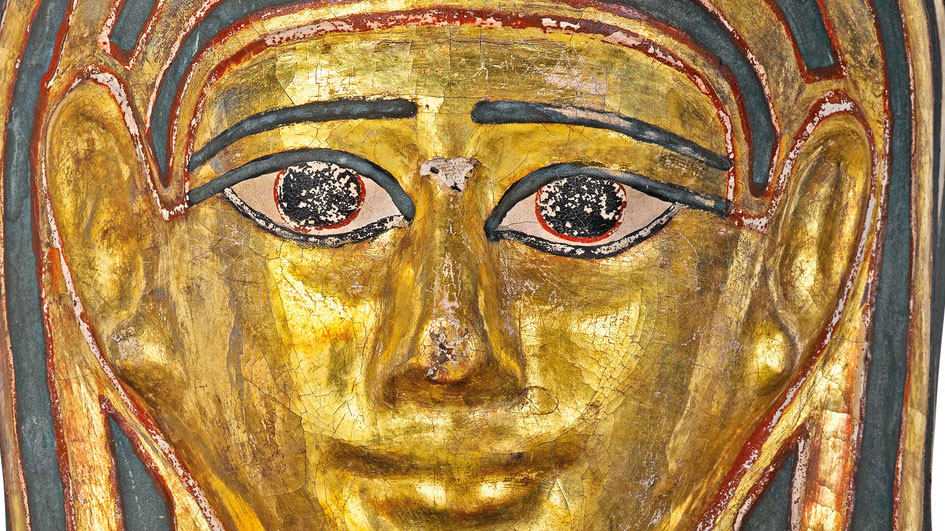Egyptian Section
The Penn Museum houses one of the largest collections of Egyptian and Nubian material in the United States, numbering in excess of 42,000 items.

The Penn Museum houses one of the largest collections of Egyptian and Nubian material in the United States, numbering in excess of 42,000 items.

Assembled through nearly a century of archaeological research, this collection is unusual in that the vast majority of the objects were obtained through archaeological investigations in Egypt and entered the Museum through a division of finds with Egypt's Antiquities Service.
Because the Museum has worked at a wide range of sites (provincial and royal cemeteries, palaces, temples, towns, sanctuaries and settlements), the collection spans ancient Egypt's entire history, from the Predynastic Period (circa 4000 BCE) through the Greco-Roman Period and into the Coptic Period (ending in the 7th century CE). It also includes a large number of material categories, such as architecture, statuary, minor arts, domestic artifacts, textiles, papyri, pottery, tools, jewelry, weapons, funerary objects and human and animal remains.
*Due to building renovations and gallery development work, the Egyptian Section is currently unable to support research requests. We apologize for any inconvenience.
From the soaring columns of Merenptah's palace to the intricate lapis lazuli amulets, the Museum's Egyptian Collections cover the entirety of Ancient Egyptian history from the Predynastic Period to the Greco-Roman Period.
The artifacts comprising the Egyptian collection of the Penn Museum derive from a variety of sources. Around the turn of the 19th century, the Museum began acquiring objects through purchases and gifts from local benefactors. However, the collections of the Egyptian Section derive primarily from excavations sponsored by the Penn Museum. Before beginning its own excavations, the Museum financially supported the work of the Egypt Exploration Fund (later Egypt Exploration Society), a British organization responsible for archaeological excavations throughout Egypt. In particular, the Museum supported the work of Sir William M. Flinders Petrie, one of the foremost archaeologists working in Egypt at the time.
Following the Museum's first independent field season at Dendereh in 1898, Eckley B. Coxe, Jr. began funding an ongoing series of excavations in both Egypt and Nubia.
Materials in our collection, which were excavated by University of Pennsylvania research teams, come primarily from the following sites.
The Egyptian Section houses a large and impressive collection of materials from Nubia including material from the Bronze Age cultures of Lower Nubia and Egyptian colonial sites of the Middle and New Kingdoms. The collection of Meroitic material including ba figures and beautifully decorated Meroitic pottery is among the best in the world.
The Museum's work in Nubia began in 1907 and lasted until 1910. David Randall-MacIver and Leonard Wooley conducted excavations at the Nubian sites of Shablul, Areika, Aniba, Karanog, and Buhen. These Nubian expeditions investigated a variety of environments including urban, domestic, military, religious and funerary contexts. Combining this variety of manner of sites with a long-ranging chronology from early Pharaonic times to the Christian era, these early excavations ensured that the Museum's Nubian collections would provide much insight into the diverse cultures of ancient Nubia and the relationship between Nubia and its (sometime) rival to the North, Egypt.
David O'Connor and William Kelly Simpson conducted salvage excavations at the sites of Arminna and Toshka in Nubia from 1960 to 1963. These excavations focused on several rock-cut tombs of the New Kingdom as well as late urban settlements.
The Penn Museum houses a fine collection of ancient, medieval and early modern written material from Egypt. The entire collection spans about three thousand years from about 1300 BCE to modern times. Individual items in the collection are written on three different types of material: papyrus, leather and paper.
Late in the 1890's and early in the 1900's, B. P. Grenfell and A. S. Hunt, two British archaeologists, conducted extensive excavations at the site of Oxyrhynchus. Grenfell and Hunt gave materials from their excavations to the Penn Museum in exchange for the Museum's financial support of their research. One of the most important of these finds is a third century fragment from the New Testament gospel of St. Matthew found in the first season of excavation at Oxyrhynchus.
A large percentage of the manuscript collection was purchased in Egypt by William Maxwell Müller. Müller became associated with the Museum shortly after its founding and encouraged the Museum to take an active interest in the current papyri discoveries by beginning its own collection. Müller traveled to Egypt and purchased papyri and other artifacts on behalf of the Museum. Several important demotic documents were part of Müller's purchases.
Clarence Fisher, Curator of the Egyptian Section (1914-1925), excavated a smaller percentage of the Museum's present manuscript collection. Fisher uncovered Hieratic, Hieroglyphic and Demotic papyri fragments at Dra Abu el-Naga.
The Egyptian Section has an importation collection of materials associated with the funerary arts in Egypt. This collection includes examples of both human and animal mummies. The collection includes early mummies, which were preserved naturally in the hot desert sand, as well as those that were produced by artificial methods of mummification.
The Egyptian Section houses a small but significant collection of textiles from Egypt. Included in this collection are linen mummy wrappings from Pharaonic Egypt (many examples are inscribed with parts of the Book of the Dead), a unique painted mummy shroud from the Ptolemaic or Roman period, examples of clothing from the Roman Period (cloaks, tunics, and hats), and beautifully decorated Coptic period textiles.